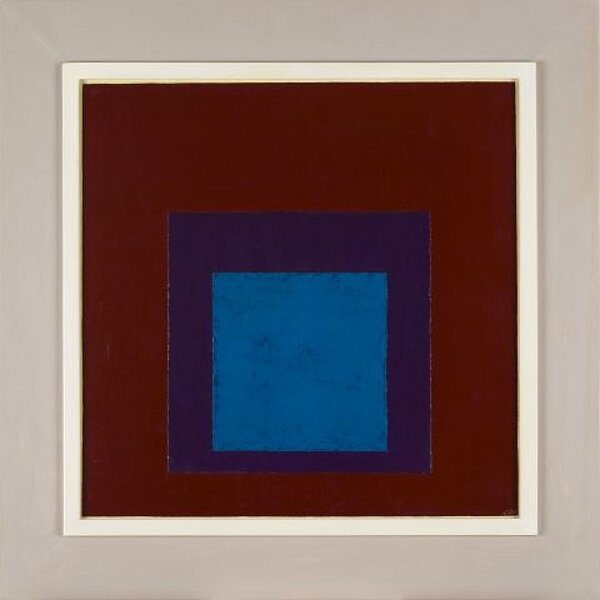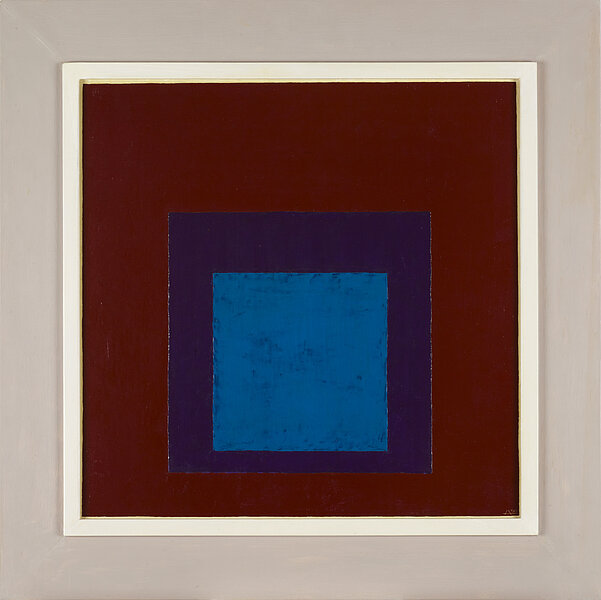
Albers, Josef
Homage to the Square
1950
| Object description | Oil on hardboard |
|---|---|
| Object category | painting |
| Material |
Painting layer:
oil paint
Support:
Hardboard
|
| Technique |
Object:
oil paintings
|
| Dimensions |
Object:
height: 52,8 cm,
width: 52,8 cm
Frame:
height: 71 cm,
width: 70,5 cm,
depth: 2,5 cm
|
| Year of acquisition | 1988 |
| Inventory number | ÖL-Stg 197/0 |
| Creditline | mumok - Museum moderner Kunst Stiftung Ludwig Wien, Leihgabe der Österreichischen Ludwig-Stiftung |
| Rights reference | Bildrecht, Wien |
| Further information about the person | Albers, Josef [GND] | Albers, Josef [ULAN] |
| Literature |
ahoi herbert! bayer und die moderne Himmel Falden Himmelschwer. Transformationen der Schwerkraft Josef Albers : Huldigung an das Quadrat 1950 bis 1976 : ein Beitrag zur Kunst des zwanzigsten Jahrhunderts |
With his “Homage to the Square”, which he worked on until his death in 1976, Josef Albers continued his theoretical and practical concerns with color he had been engaged in for many years. He examined the dependence of color on form, its placement within the picture and the effect of constellations of proximate colors. The enlargement or reduction of the square in steps, repeating the form of the picture support, was the basis for the composition of the picture. The individual colors were applied unmixed, directly from the tube and then smoothed with a palette knife. Adjacent colors touch each other at the borders so precisely that the white ground is invisible. The simplicity of the composition shows the subtlety and complexity of color perception: depending on affinity or contrast the colors join or separate from each other, appear to be in front or behind, above or below each other. Here is a quote from Albers: … two random colors may have a very exciting relationship with each other. That sounds simple enough but since the effects depend on mass, placement, form, repetition, ground, light, etc. it remains a struggle. Color is the most relative of all artistic means. And it requires a well-trained eye to see correspondences between all given colors.”
© mumok – museum moderner kunst stiftung ludwig wien

